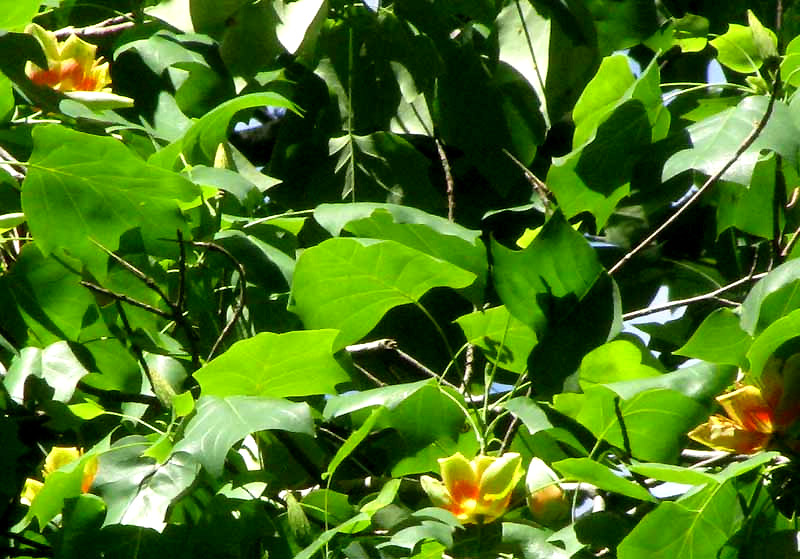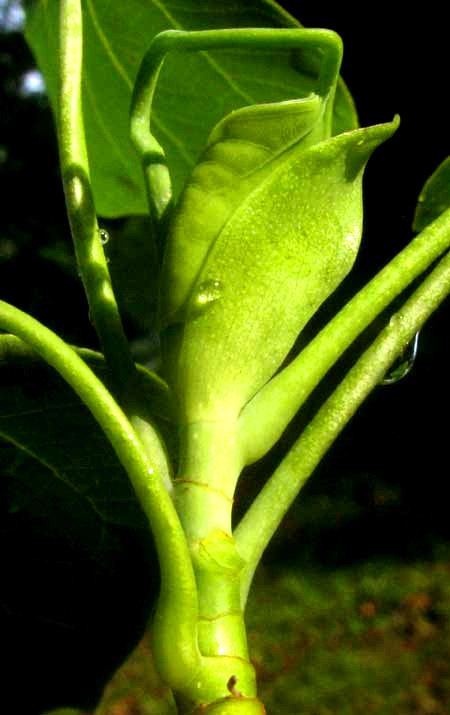Excerpts from Jim Conrad's
Naturalist Newsletter

from the April 8, 2012 Newsletter issued from the forest a few miles east of Natchez, Mississippi, USA; elevation ~400ft (120m), ~N31.47°, ~W91.29°
TULIP POPLARS FLOWERING
Tuesday afternoon suddenly a roar arose in the forest, a flash and a clap of thunder followed, treetops all around began bending and then there came the cracking sound of a tree falling, all within just a few seconds. I'd seen the storm coming, but its sudden arrival still surprised me. For awhile I was running barefoot looking skyward, trying to avoid falling trees, falling over things, and that must have been funny to see.
The fallen tree turned out to be a healthy looking, medium-size Tulip Poplar, LIRIODENDRON TULIPIFERA. Tulip Poplars are known for their brittle wood that snaps easily under stress, but also they grow fast so that soon storm damaged trees regain their habitually pleasing shapes. Our tree, though, lost most of its body, so it'll almost be starting from scratch.
The leaves and two-inch-wide (5cm) flowers of a standing, neighboring Tulip Tree are shown at the top of this page. In that picture notice the Tulip Poplar's distinctive leaves, their tips not sharply pointed like most leaves but rather broad and flat with a shallow notch. A flower glowing in golden morning sunlight is seen below:

The similarity of that blossom with a magnolia flower -- large petals, many stamens, many pistils tightly clustered in a spiraling manner into a conelike structure -- makes sense because Tulip Poplars are members of the Magnolia Family. The twigs are magnolia-like, too, with oversized stipules, as shown below:

That picture shows the tip of a Tulip Poplar branch, the slender, bent structure at the top being an expanding leaf's petiole. The leaf's folded blade is in the process of withdrawing from the large, envelope-like stipule occupying the center of the picture.
Remember that stipules are modified leaves that typically protect very young tissue during early stages of development. Once the leaf in the picture is fully expanded and no longer inside the stipule, the stipule will fall off, leaving behind a scar encircling the stem. In the picture, at the base of the top petiole going off to the right, you can see the "line of abscission" where the stipule will break off later. Below that line other "stipular rings" also are clearly visible. Magnolia stems have similar rings.